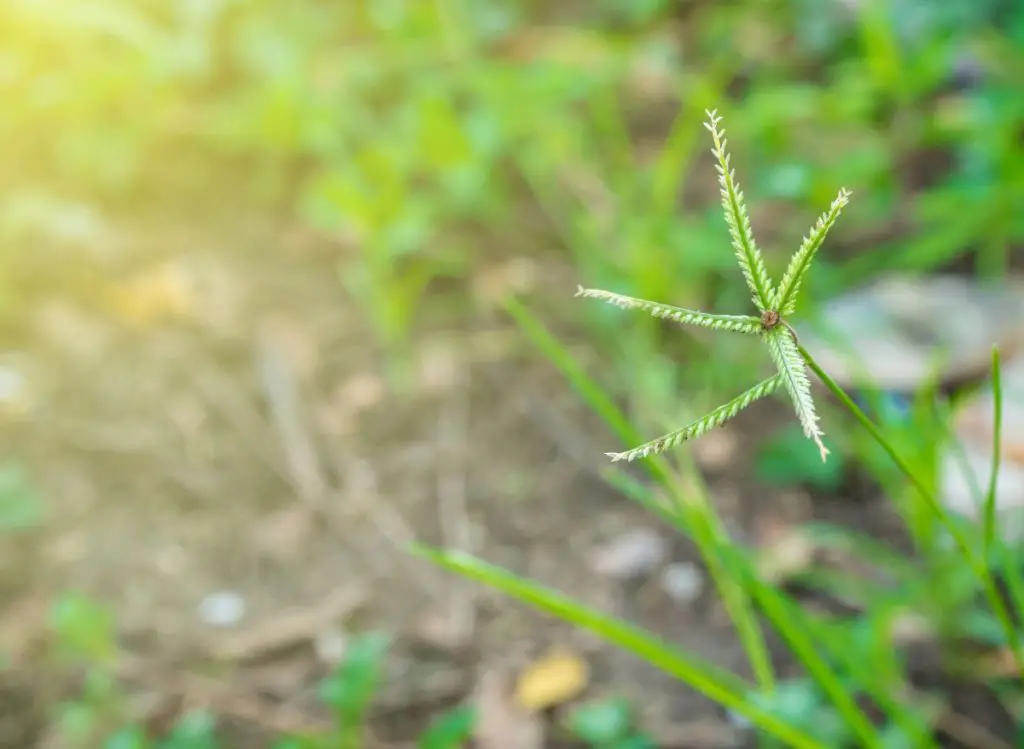
Crabgrass (Digitaria sanguinali) is a weed that is resistant to most traditional herbicides and can quickly take over your lawn. And it can grow upward to 24 inches (61 cm).
There are two most common types of crabgrass: smooth crabgrass, which grows to 15 inches (38 cm) tall, and large crabgrass, growing to 36 inches (91 cm) tall (Source: University of Massachusetts Amherst)
Many homeowners are afraid to use chemical herbicides because they fear that they might also kill their grass. But there’s a solution to your problem. Keep reading to find out the best crabgrass killer that won’t harm your grass. Read this article if you are looking for effective and affordable homemade Crabgrass killers.
1- Pre-Emergent Herbicides
Pre-emergent herbicides are the first line of defense against crabgrass. Pre-emergent herbicides work by preventing the weed from germinating in the first place, which makes them the best option for long-term crabgrass prevention.
A pre-emergent herbicide typically contains ingredients like dithiopyr, pendimethalin, or prodiamine and should be applied at the right time for optimal results.
While not all pre-emergent herbicides are formulated to be lawn-friendly, there are a few products on the market that won’t harm your grass. A good example is Scotts Halts Crabgrass & Grassy Weed Preventer.
Pre-emergent herbicides are usually applied in the early spring and fall before the weed seeds can even grow. Pre-emergent herbicides are effective and have a long-lasting effect. And generally, they won’t harm your existing grass and are safe to use.
2- Post-Emergent Herbicides
Post-emergent herbicides, such as quinclorac or fenoxaprop, are designed to kill existing crabgrass once it has already sprouted.
While post-emergent herbicides can be effective, they can also harm your lawn if they are not used correctly. The key to using post-emergent herbicides is to apply them only to the affected areas and avoid over spraying.
Selective herbicides, such as Tenacity Herbicide, are the best type of post-emergent herbicides to use because they only target specific weeds and not your lawn.
I also encourage you to read the label and follow the instructions when using post-emergent herbicides.

3- Natural Remedies
If you prefer to stay away from chemicals, some natural remedies can help control crabgrass. The good news is natural remedies are safe for the environment and are safe to use around children and pets.
One of the most simple and effective natural options is to hand-pull the weed. Make sure to remove its roots to prevent it from growing back.
Organic products like Preen Garden Weed Preventer, made of corn gluten meal, can act as a natural pre-emergent herbicide and suppress crabgrass growth. However, some experts, including the University of Maryland Extension, don’t recommend Corn gluten for weed control in lawns because research shows that it might not be effective.
Another research from Oregon State University did not find corn gluten effective in controlling any weeds over a two-year period.
Another method is to suffocate the weed by covering it with mulch or cardboard. This method will block the sun, preventing the weed from growing.
4- Lawn Maintenance
The best way to prevent crabgrass from ever growing in your lawn is to maintain a healthy lawn. A healthy lawn will be thick and dense, making it difficult for weed seeds to germinate. Regular mowing, watering, and fertilizing will help to keep your lawn healthy and prevent crabgrass from taking over.
By following proper lawn care practices, you can help your grass grow and prevent crabgrass. Healthy grass will outcompete the weed, making it difficult for it to grow.
Some tips include:
- Regular mowing
- Fertilization
- And proper watering.
- And, if you are unsure about how to take care of your lawn, consider hiring a professional lawn care service.
5- Herbicide-Free Lawn Care
When choosing a crabgrass killer, consider the time of the year you will be applying it, the type of grass you have, the severity of your crabgrass infestation, and the size of your lawn.
The proper application rates and timing are essential for ensuring effective control without harming your lawn. Be sure to read and follow the product label carefully.
6- Other considerations
You can try lawn care services that use natural products and techniques to keep your lawn healthy and weed-free. They use methods like aeration, overseeding, and topdressing to keep your lawn healthy and crabgrass-free.
What to read next:
- Is Vinegar Effective For Killing Crabgrass? Here’s The Truth!
- How To Speed Up Grass Seed Germination (A quick guide)
- How To Effectively And Easily Get Rid Of Petty Spurge: Here’s How
Wrapping Up
Crabgrass can take over your lawn and ruin its appearance, but you don’t have to use harsh chemicals to get rid of it.
The best crabgrass killer that won’t harm your grass includes pre-emergent and selective post-emergent herbicides, organic methods, regular lawn maintenance, and herbicide-free lawn care services.
I encourage you to try one or more of the methods discussed in this article to get rid of your crabgrass problem and keep your lawn looking healthy and beautiful.

